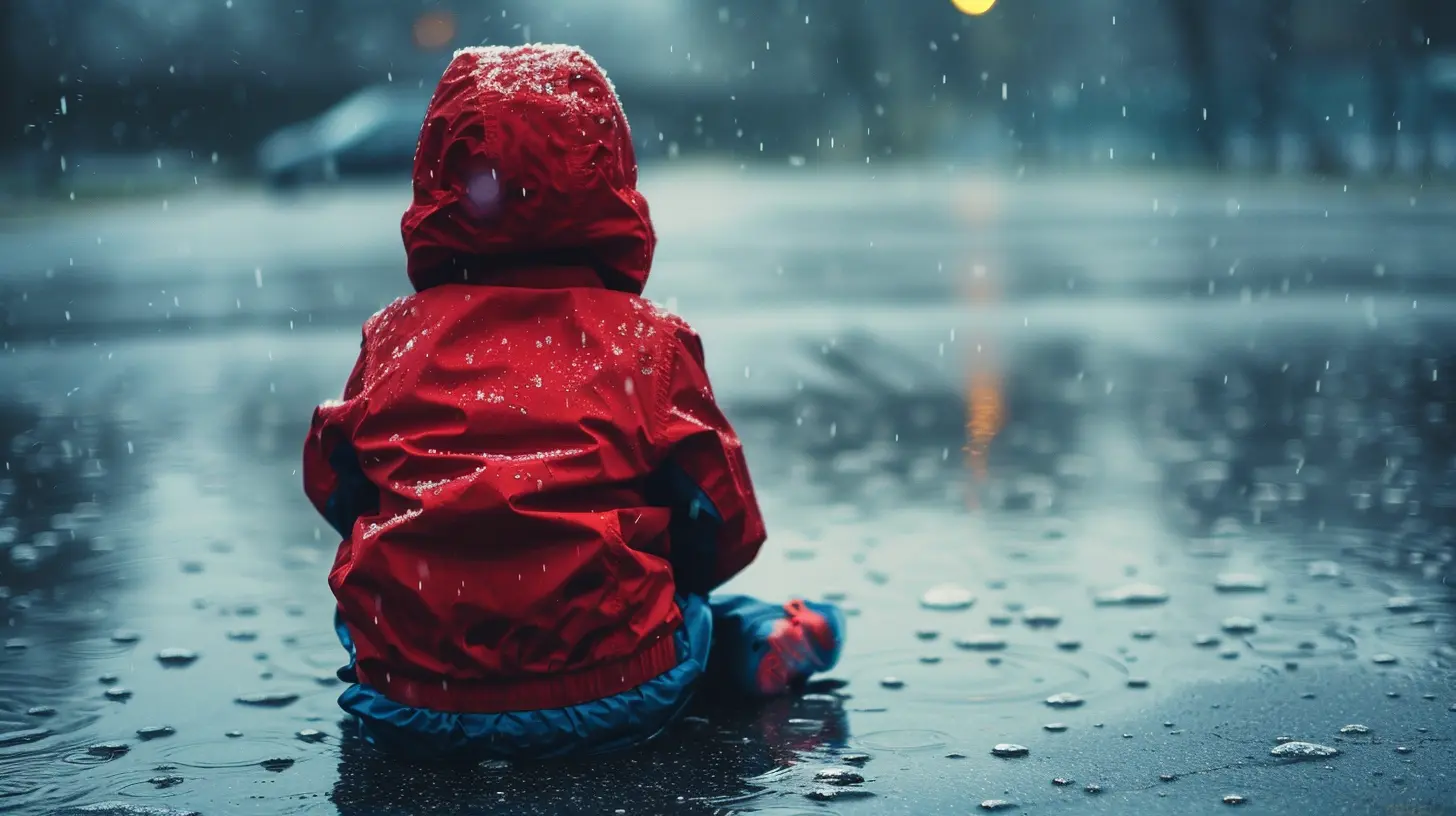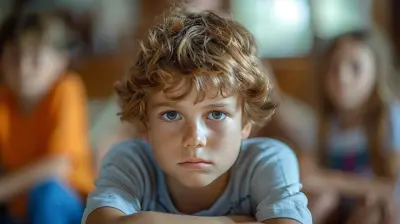Are You Teaching Your Child to Fear Failure?
10 October 2025
Let’s be honest — failure sucks. No one likes it. We avoid it like a Monday morning without coffee. But here’s the thing: failure is one of life’s greatest teachers. And yet, as parents, we often unknowingly raise our kids to fear it… like it’s some kind of big, ugly monster hiding under their bed. So ask yourself — are you teaching your child to fear failure?
If your heart just skipped a beat, don’t panic. You’re not alone. So many well-meaning moms and dads fall into this trap. But the good news? You can change the way failure shows up in your home — not as something to avoid, but something to learn from and even embrace.
Let’s have a real talk about this. No sugar-coating. Just an honest guide to help you rethink how your child sees failure — so it doesn’t become a lifelong fear that holds them back.
The Subtle Ways We Teach Fear of Failure
We tell our kids to try their best. But do we really mean it? Or do we secretly want them to be the best?You might be surprised by how often we send mixed messages. Here’s how that looks:
1. Praising Only Success
“Wow, you got an A! You’re so smart!” Sounds innocent enough, right? But what happens when your child gets a C? Or worse?Kids quickly learn which outcomes get applause. If they start believing that love and approval come only with perfection, they’ll play it safe. That fear of messing up? It grows — fast.
2. Rescuing Them From Mistakes
Did your child forget their homework? Did you rush it to school so they wouldn’t get in trouble?We’ve all done it. But every time we swoop in to “save” them, we deny them a valuable opportunity to face consequences — and grow from them. Mistakes are their stepping stones. If we smooth out every bump, we rob them of the chance to climb.
3. Setting Unrealistic Expectations
Being supportive doesn’t mean wanting straight A’s, a lead role in the play, and MVP status on the soccer team. When we expect perfection, kids carry that pressure like a backpack full of bricks. And failure starts looking like shame instead of learning.4. Avoiding Talk About Failure
Let’s admit it — most of us don’t like talking about failure. It’s uncomfortable. We gloss over it. We pretend we’ve always had it together. But when we don’t share our struggles, our children grow up thinking failure is abnormal or even shameful.
Why Fear of Failure Is More Dangerous Than Failure Itself
Here’s the truth: failure itself isn’t the enemy. It’s our reaction to it that shapes our children’s mindset.It Kills Confidence
When fear of failure takes root, kids won’t try new things. Why would they? The risk of getting it wrong feels way too high. So they shrink themselves to stay “safe.” Over time, that erodes self-esteem and confidence.It Blocks Resilience
Resilience — the ability to bounce back — is one of the most valuable life skills. But if a child fears failure, they won’t learn how to cope with setbacks. They’ll see failure as the end of the story instead of part of the process.It Stunts Growth
Growth comes from stepping outside your comfort zone. But fear of failure keeps kids inside a small, safe bubble. And inside that bubble? Not much learning, not much discovery, and definitely not much joy.
How to Raise a Child Who Embraces Failure
So what now? How do we turn this around?Good news — it’s not too late. Whether your kid is 4 or 14, you can shape how they see failure. Here’s how:
1. Praise Effort, Not Just Results
This one’s big. Start noticing and celebrating the process — not just the outcome.Instead of:
“Great job on the A!”
Try:
“I saw how hard you worked on that project. That persistence really paid off.”
This teaches your child that effort matters more than perfection. More importantly, it tells them it’s okay to fail as long as they gave it their all.
2. Model Failure Yourself
Let them see you mess up. Yep, seriously. Forgot an appointment? Burned dinner? Lost your cool?Use it as a teachable moment:
“Wow, I really messed up today. But I’m learning from it and trying a different approach next time.”
When kids witness failure firsthand — and see how you bounce back — they learn it's just a part of life, not a catastrophe.
3. Stop Rescuing
Let them fail. Let them fall. It’s painful, I know. But it’s powerful.Forgot their soccer cleats? Maybe they sit out practice this time. Messed up a school project? Let them handle the consequences.
It’s not cruelty — it’s training. It helps them learn accountability, problem-solving, and grit.
4. Normalize Struggles
Talk about times when YOU failed. Share those middle school stories, the job interview flops, the parenting fails.Let them see that mistakes are not only common — they’re essential. The more you normalize struggle, the less ashamed your child feels when they fall short.
5. Redefine Success
What if success wasn’t straight A’s or a perfect score?What if success meant showing up, trying hard, and growing stronger — even when things don’t go perfectly?
When we redefine success as personal growth instead of external results, kids stop chasing perfection. They start chasing progress.
Help Them Develop a Growth Mindset
Have you heard of the term "growth mindset"? It’s basically the belief that abilities can improve with effort — not something you’re just “born with.”Here’s how you can help foster that mindset in your kid:
Use “Yet” Language
Instead of “I’m not good at math,” teach your child to say, “I’m not good at math YET.”That simple three-letter word opens the door to possibility.
Encourage Curiosity Over Correctness
Ask questions like:- “What did you learn from that?”
- “What would you do differently next time?”
- “How can you approach this challenge a new way?”
This shifts the focus from winning to learning.
Celebrate Failure
Yes, seriously. Did your kid try something new and totally face-plant?Celebrate the courage it took to try. Bring humor into the situation. Show them that bravery matters more than outcome.
Real-Life Scenarios: Turning Failure Into Fuel
Let’s make this stuff real. Here are a few scenarios you might face — and how to handle them:Scenario 1: Your Child Fails a Test
Old reaction: “Why didn’t you study more? What happened here?”New reaction: “That didn’t go as planned, huh? Let’s look at what tripped you up and figure out how to study differently next time.”
See the difference? One shames, the other teaches.
Scenario 2: Your Child Doesn’t Make the Team
Old reaction: “You should’ve practiced more. Maybe next year.”New reaction: “I know how badly you wanted this — it stings. But I’m proud of you for putting yourself out there. That takes serious guts.”
Honor the hurt, but highlight the bravery.
Scenario 3: Your Child is Too Afraid to Try
Old response: “Just do it, it’s not that hard!”New response: “It’s okay to feel nervous. Trying something new is scary sometimes. But you’ll never know what you’re capable of unless you give it a shot.”
Encourage risk, not perfection.
Final Thoughts: What Message Are You Sending?
At the end of the day, the way your child deals with failure starts with you.Are you sending the message that mistakes are shameful? That perfection is the goal? That falling short means falling behind?
Or are you teaching them that failure is a stepping stone, a teacher, a sign that they’re brave enough to try?
You don’t need to have all the answers. You don’t need to get it right every time (hey, that’s kind of the point, isn’t it?). Just start where you are. Be willing to shift the conversation at home — from fear to freedom, from shame to growth.
Your child’s future confidence, resilience, and grit? It starts with what you show them today.
So next time your kid fails, don’t fix it. Don’t hide it. Don’t fear it.
Teach them to face it, learn from it, and try again.
Let failure be the teacher. And let love be the lesson.
all images in this post were generated using AI tools
Category:
Parenting MistakesAuthor:

Austin Wilcox
Discussion
rate this article
1 comments
Gunner Moore
What a thoughtful piece! Teaching our children to embrace failure as a stepping stone to success is so important. Your insights provide valuable guidance for parents navigating this crucial aspect of fostering resilience and growth. Thank you!
October 19, 2025 at 3:59 PM

Austin Wilcox
Thank you for your kind words! I'm glad you found the insights helpful in promoting resilience in children.


